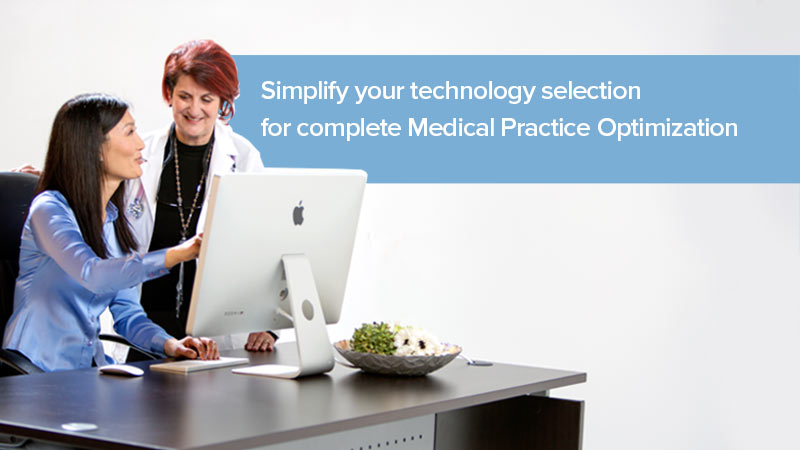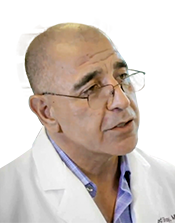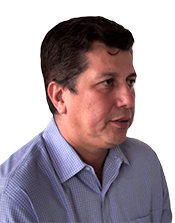
Introduction
As a medical practitioner, your first priority is quality of care for your patients. For decades, we have all benefitted from physicians’ collective focus on medical outcomes that has consistently delivered the best healthcare in the world. Ironically, within much of today’s “escalating cost of healthcare to the consumer” rhetoric, providers are either vilified and lumped together with those blamed for runaway healthcare costs, or they are silently factored into the cost equation at the point where more can be squeezed out of the system, “because doctors make too much money anyway.”
As you and your bank account are probably painfully aware, the truth is that over the past decade practices have been caught in the squeeze of increasing costs and falling reimbursements. Gross fee-for-service (FFS) collections have declined nearly 9% while total operating costs are up nearly 52%, reducing gains in medical revenue after operating costs by over 14% during the past ten years. Additionally, first-pass claim denial rates are running at more than 30%, and total average accounts receivable per physician are at $142,000, with more than 22% of this total at 120 days or more, essentially uncollectible.1
Now, more than ever, medical providers are under growing pressure to focus on the business side of their practices in order to remain profitable, or in many cases, just to keep the doors open. Once considered an annoying distraction from more important clinical work, escalating practice management and clinical efficiency/documentation issues have sent providers scrambling to find technologies and methods for improving the management of their practices.
Interestingly, many physicians are discovering that rather than wrestle with the problem, they can apply the same disciplined approach that delivers positive clinical outcomes to the business side of their practices, with equally positive results. Clinicians call it implementation of pathways or protocols. Business efficiency experts refer to it as optimization: implementing systems and practices that produce the best, highest value products at the lowest cost, thus maximizing profits in the process.
While any optimization is good, complete optimization is obviously better. Mesmerized by localized or incremental gains, many medical practices overlook the substantially greater leverage and improvements that are available through complete, integrated optimization within an overall framework. Additionally, many medical practices are unaware that complete optimization is often more broad and interconnected than might be intuitively evident. It takes a certain amount of experience and expertise to recognize all of the potential pathways and protocols that lead to optimal business outcomes.
There is a fundamental framework which a complete optimization can take place most effectively. This paper sets forth the distinguishing elements and infrastructure necessary to implement effective comprehensive MPO. It should be noted that just as the “practice” of medicine never ends, by its very nature, business optimization is not a one-shot, do-it-and-you’re-done event. It is an ongoing, incremental process that when practiced inside of an effective framework continues to deliver ever-improving business results.
A Comprehensive Framework for Medical Practice Optimization
An effective, comprehensive approach to medical practice optimization, or MPO, takes place within a framework comprised of six distinguishing components:
- Complete & integrated automation systems
- Easily accessible best practices implementations
- Data security & integrity
- Robust remote access
- Minimized IT cost & disruption
- Value pricing
Underlying this framework is the IT delivery platform, the foundation for the entire structure, which we will discuss in the following section, where cloud technology has distinguished itself as most capable of delivering the benefits of MPO.
1. Complete & Integrated Automation Systems
The number of medical software systems and features touted by vendors today has grown so large, and often become so expensive, that many practices feel forced into the corner of buying either the minimum feature set for the lowest price or acquiring every available option, “just in case.” As you might expect, the best option lies somewhere in between the two extremes. The trick is to determine which features are crucial to optimization success and ensure your system includes those features.
Distinguished Systems. Rather than get bogged down in the nuances of feature implementation, we have identified the key functions necessary to achieve complete MPO. We refer to them as distinguishing functions – those essential to building a solution capable of complete medical practice optimization with sustaining improvement. Thus, a distinguished system may not contain every possible feature or particular feature characteristic, but will be especially robust in key functional areas. This type of complete system is sometimes referred to as an “end-to-end” solution.
Complete Integration. From a software standpoint, the other key function of a distinguished system is what is known in software industry parlance as integration. While this term can mean many things to many people, for our purposes we define it from the user experience standpoint. A completely integrated system presents and manages the various technology pieces in a way as to be conducive, not disruptive, to efficient workflow in things like application or screen jumping, redundant data entry, and quick, logical access to labs, meds and images. We often refer to this as a seamless user experience, moving from one inter-related task to another across the workflow spectrum. Included is the challenge presented by multi-vendor systems, vs. centralized cloud solutions, where an upgrade to one system breaks other integrated systems, impacting work efficiency across the board.
One best practice to optimize practice functions and workflow is to integrate your EHR and Practice Management. According to Gartner, “We do not recommend establishing a partnership with an EHR vendor unless it offers a truly integrated product that includes both practice management and EHR. Moreover, we recommend replacing existing practice management systems with the integrated product when installing the EHR.”
A second, frequently overlooked aspect of complete integration is the possibility for deep and meaningful research achievable through fully integrated databases of medical information.
Complete System: Distinguished Practice Management, Revenue Cycle Management and EHR
A complete, distinguished MPO system provides a robust, seamless solution from first patient contact through scheduling, appointment and encounter, documentation, billing and payment, through referral and follow-up. This is best accomplished in an end-to-end system comprised of the following:
A. Distinguished practice management
B. Revenue cycle management
C. Electronic health record functions
A. Distinguished Practice Management
Practice management systems have been around for some time, and come with a wide variety of flavors and features. Key distinguishing functions must include the following:
Advanced Scheduling. The scheduler should include advanced functionality like expandable column-based multiple provider/resource scheduling and color-coded appointments, simple-to-use wait listing and overbooking, and multiple office/mobile provider scheduling from a single screen.
Online Insurance Eligibility Verification. This functionality should be a quick (e.g. less than one minute), seamless part of the check-in process. Automated pre-verification based on next day’s schedule should also be available.
Co-payment/Patient Portion. Significant improvement in revenue capture comes from collecting these payments at check-in and check-out. The system should seamlessly pull and present this information to the staff from the revenue cycle system.
Anytime/Anywhere Access. The ability for providers and staff to get to the schedule anytime from anywhere is crucial, including your mobile phone, tablet and laptop.
Advanced Reporting. A distinguished system will include a broad range of standard reports, as well as a robust custom report building capability (e.g. through ODBC programming). Reports should cover all crucial areas of your practice, from financial to staff productivity, claims and payer experience, diagnosis and procedure codes, and inventory.
Simple to Learn & Train. Retraining costs due to staff turnover, and costs from inexperienced user errors, can quickly mount with systems that are capable but not user-friendly. Ensure that your system is simple to use, intuitive and includes abundant online help and training resources.
B. Distinguished Revenue Cycle Management
The revenue cycle is the area of highest provider frustration, perhaps more than any other function on the business side of medical practice. Whether dealing with convoluted reimbursement rules, “squeeze and delay” tactics or government bureaucracy, many providers have become exasperated with the lack of power they feel over their own revenues and incomes. While outsourcing can reduce the pain level, unless the billing service is built on an optimized system and integrated with your practice, the results may be far from ideal.
While many hundreds of systems attempt to address the medical billing conundrum, very few possess the distinguishing functionality that can significantly impact positive improvements in reimbursement and cash flow. You need these distinguishing functions working for you in order to effectively optimize this critical aspect of your practice.
Comprehensive Workflow. Since billing workflow is lengthy and complex, it’s imperative that the billing system captures each step, including adequate checks and balances, to ensure that nothing is lost through the cracks. For example, charges should be captured with electronic charge slips (which should be integrated with the EHR–see next section), and the system should include a simple, fool-proof method of accounting for each visit’s charge at the end of the day. Another example is denial management, where the system should flag denials and provide a simple, self-contained workflow for resolution, re-submission and tracking/reporting. The Medical Group Management Association (MGMA) best-selling book, The Physician Billing Process: 12 Potholes to Avoid in the Road to Getting Paid, 2nd Edition outlines the industry-standard best practices for medical billing. We recommend these twelve functions as the standard for any distinguished billing system workflow. Revenue Cycle Mastery – The AdvancedMD Training & Companion Guide is also an important reference source for implementing these billing practices.
“Organic” Claim Scrubbing. Initial rejection of claims delivers a devastating blow to the non-optimized medical practice. On average, 30% of first-time submittals are rejected by payers; largely for inaccuracies in how the claim was completed. Of those rejections, only about half are corrected and re-submitted. State-of-the-art claim scrubbing software is able to find errors prior to submission and suggest fixes so claims are clean. The best technology today is delivering first-time rejections of only about 2% of claims submitted. A distinguishing function of systems delivering those results is the shared experience of thousands of users – facilitated through a cloud delivery model – that quickly shares payer rule changes or processing improvements to every user on the system. This organic improvement model delivers the collective best practices discoveries instantly on an ongoing basis, ensuring that medical practices of any size keep pace with changing requirements of even the largest payers.
Centralized Claims Submittal. While any practices utilize a clearinghouse for claims submittal, many find this avenue too expensive for Medicare, Medicaid and other specialized payers, and split these claims from of the main workflow. A more effective process is to utilize an integrated, online solution where the clearinghouse is fully integrated with the claims management system. Because of large volumes and favorable contract terms, submittals can be handled profitably regardless of payer.
Optimized Billing Services. Some practice may opt to outsource the entire billing function. This is a viable strategy, provided the billing service runs on an optimized platform as outlined above. An important part of this solution must be the ability to easily and inexpensively integrate your practice’s other functions with the billing provider’s system. This is best accomplished through a cloud delivery model that allows the billing service to act as a direct extension of the practice’s office.
C. Distinguished Electronic Health Record (EHR)
Clinical automation is clearly in the spotlight and under the microscope currently, with both pressure and incentives mounting to nudge providers to adopt. As is the case with practice management and revenue cycle automation, Electronic Health Record (EHR) systems come with a dazzling array of features, benefits and costs. While several leading industry organizations provide highly detailed analysis and certification of EHR functionality – which we fully support – we offer here a few key functions that distinguish a system’s ability to drive substantial optimization of the practice, particularly in concert with other systems and workflows that must interact smoothly together. These distinguishing functions include:
Meaningful Use. While the U.S. Government provides financial incentives for the adoption of certified EHR Technology based on demonstrating meaningful use2 after the system is installed and the incentives are paid, the real test of meaningful use is the value the system adds in helping meet your clinical and professional goals. Although specific functions may vary according to your specialty and goals, these should be on your checklist of those that will provide long-term meaningful use to your practice, while fulfilling government requirements in their final form:
- Best practices standards incorporated directly into clinical documentation templates
- Clinical decision support tools designed to develop clinical measures as well as new ways for improving chronic & preventative care
- Automated E&M coding support, including links to billing
- Scheduled and on-demand reporting tools for tracking practice patterns, identifying at-risk patient populations & supporting disease management
ePrescribing. These tools save physicians, staff and patients countless hours in all of the writing, calling, transcribing and waiting in line at the pharmacy associated with paper-based prescribing. Patient demographics should automatically populate from the practice management system. Physicians should be able to write or refill scripts from anywhere via a secure Internet link – as in the case of cloud systems.
ePrescribing controlled substances. Prescribing controlled substances requires stringent security and tracking due to the high potential for abuse. A progressive EHR should have the built-in technology to help your practice track DEA Schedule II-V prescribed drugs with software that’s easy to use and implement. New York State has already mandated it and it’s only a matter of time before all remaining states require ePrescribing of controlled substances.
Mobile access. The ability to access a patient record while out of the office is crucial in today’s health care environment. Web-based access to patient clinical and demographic information is a must, from any Internet-connected computer, tablet or mobile handheld device. Improve your productivity by accessing patient charts, medications, problems, allergies, immunizations, scanned documents, lab order and results.
Interoperable. Eliminating paper means that your system must easily communicate and exchange information between your office and other systems such as labs, imaging centers, pharmacies, other providers, hospitals and Health Information Exchanges (HIEs). Faxes, couriers and duplicate data entry from one system to another must be replaced with seamless electronic communication. This function is vastly facilitated if the EHR is also tightly integrated with the practice management and revenue cycle systems so that charge and demographic data flow freely when and where it is needed.
Health maintenance. The process of ensuring that continuity of care protocols are followed is vastly improved with this automated function. The system should support established care plans and protocols and be capable of customization on a variety of variables, such as by diagnosis or payer. It should be easy to schedule follow-ups, screenings, procedures and create orders.
Patient portal. These secure online tools improve patient relations and save staff time by giving patients the ability to self-serve for items such as completing pre-exam questionnaires and histories, view test results, and send and receive messages with medical personnel. Information from these activities flows directly into the patient record prior to the visit.
1. Complete Integration: The Power of Shared Data
Integration of the three core medical practice automation systems, practice management, revenue cycle management and EHR, is essential in achieving significant optimization gains. This integration facilitates powerful synergies based on the capability of the systems to easily share common data and facilitate cross-system workflows. Key areas of synergy include:
Optimization of work through elimination of redundancy. Shared data reduces the need for double entry of data or hopping from one system to another to retrieve bits of necessary information. Efficient systems have the ability to send procedure and diagnosis codes directly into the billing system through an online charge slip, or addressing claim denials by pulling and electronically attaching key pieces of encounter data.
PQRI (Physician Quality Reporting Initiative). This Medicare/Medicaid-related initiative requires specific reporting to be completed in order to qualify for monetary incentives. A fully integrated system streamlines this reporting by providing simplified access to all required reporting data.
Shared community of knowledge. Your practice can take advantage of aggregate statistics and shared best practices knowledge that are available on the revenue cycle side of the house. Look for vendors who can utilize centralized cloud technology to analyze aggregate data and leverage the collective experience of thousands of users in improving such things as payer rejection rates and claims submission practices.
2. Easily Accessible Best Practices Implementations
There is a significant difference between a software system with a rich set of features and a system that has implemented best practices processes that pull features together into a smooth workflow. Your system should include tools and processes embedded in the workflow that will facilitate quick ramp-up and ongoing fine adjustments. Functions like collecting up-front fees, reminders, no-shows and coding/posting improvements should be built in. Software should also accommodate additions and upgrades based on newly-validated best practices without significant cost and workflow disruption – again pointing to cloud platform delivery. An important indicator is whether you feel the system is dragging you into the IT business or freeing you and your staff to focus on improving office flow and patient care.
Keep in mind that even the best, most simplified improvements will require some training and education. This is most cost-effectively accomplished at the time updates are delivered–via web-based training and help documentation.
3. Data Security & Integrity
Loss of practice or clinical data can be devastating. While the “failure is not an option” mantra is offered by many vendors, the reality is far from this ideal. The majority of client/server systems rely on tape backup to ensure against catastrophic loss; yet, the potential for failure is high, even with conscientious staff.
Backup and recovery experts estimate that anywhere from 42–77% of tape-based data restore operations fail.3 A dermatology practice we are familiar with suffered a server crash that required a full restore of their data – which they had faithfully backed up at regular intervals. The good news was that 98% of the data was restored. The bad news was that the unrecoverable 2% represented over 6,000 transactions.4 This clinic, like many others, has found that a centralized cloud-based data solution eliminates this problem and is the most cost-efficient way of securing data.
Cloud systems run in enterprise-class data centers, similar to those used by banks and financial institutions, and backups happen automatically, typically every hour. The result is that even the smallest clinic has world-class data security and backup at a very reasonable cost without the worries, hassles and risks of maintaining an onsite system.
4. Robust Remote Access
Like much of today’s workplace, healthcare work is increasingly moving from being a place, to being an activity, requiring access to essential data anytime from virtually anywhere. Remote, mobile and at-home work demands fast, secure and complete access to information from any or all practice systems.
While most systems provide some sort of web-based access, they often suffer from poor performance, limited data access and expensive technology workarounds and add-ons. Truly transparent access, where users say they can’t tell the difference between working at the office or anywhere else, is best achieved by a hosted, web-based centralized system with a cloud delivery model that has been optimized for Internet, browser-based performance.
5. Minimized IT Cost & Disruption
Computer systems by their very nature require significant attention and highly qualified resources to run optimally. The challenge has increased with the adoption of EHR systems, which simply cannot stop running. System updates and upgrades are often “install the disk and hold your breath” experiences, and expensive failures and downtime are not uncommon, including cascading “breaks” in other interrelated multi-vendor systems.
Highly optimized practices have discovered that getting out of the IT business and turning it over to the experts in a hosted, web-based system allows them to focus on implementing the tools and processes that streamline health care delivery for their patients. Likewise, updates should be automatic without the need to insert a disk or even download from your favorite app store.
6. Value Pricing
Technology pricing is always tricky, with so many variables and unknowns, different pricing schemes, add-ons, etc. Here are a few key things to keep in mind when pricing a software system that will be capable of optimizing your practice:
- Cost should be evaluated against benefits that can be delivered by distinguished functionality. This is the long way of saying that the cheapest software may actually cost you more in the long run, with lower workflow efficiency, lower reimbursement, lost data, downtime and ongoing IT maintenance/upgrade costs.
- Some pricing schemes can put you in a higher cost situation down the road, either by requiring a “maintenance” fee to keep the software current, or by forcing you to buy expensive upgrades in order to keep the system running.
- Be aware of the amount of time a system takes to generate a projected Return on Investment (ROI). Even with significant gains in efficiency, large up-front cost systems can take many years to pay for themselves.
A low-risk, high-value alternative is a subscription-priced web-based system. This model avoids a large up-front cost and ongoing maintenance expense of most on-site systems, and includes upgrades and clearinghouse charges in the subscription fee (be especially mindful of the clearinghouse fees, as they can be an expensive unanticipated add-on cost with non-web-based systems). Additionally, you can add incremental capacity, paying only for what you need as you need it.
Making it Real & Affordable: Cloud Foundation
As mentioned at the beginning of this paper, while any optimization is a good thing, complete, cost-effective optimization is only obtainable with a technology foundation capable of delivering the integrated tools, data and performance demanded by distinguishing functionality. Cloud technology that has proven most capable of meeting this challenge.
In simple terms, the cloud platform enables web-based delivery of software functionality from a single application to a large number of users. It is often referred to as software-as-a-service (SaaS), multi-tenant or one-to-many. It is important to note that while multiple users share the same application, their proprietary data (e.g. practice and patient data) is completely separate, secure and confidential. These systems exceed all applicable HIPAA requirements, providing compliance to individual practices at a fraction of the cost of doing it themselves.
There are many advantages to this type of approach, including centralized upgrades and software maintenance, data security and backup, anytime/anywhere access, and IT infrastructure cost savings.
Two key factors distinguish cloud delivery technologies that are truly capable of supporting complete medical practice optimization. It is critical to understand how these differ from those that deliver partial solutions or claim capabilities they are unable to sustain.
Truly Cloud. Many applications are purported to be web-based, but are in reality only “web-enabled.” This subtle-sounding difference is actually quite profound with regard to features and performance. Essentially, web-enabled applications are conventional client-server based technologies that are given a web-based “window” into certain parts of the application. The result is limited functionality, slow performance and high cost. True cloud applications on the other hand, were designed and built to be web-native, delivering complete feature access and fast performance to any Internet-enabled device.
All Cloud. An interesting phenomenon has developed among purveyors of cloud technology. Customers quickly learn that a vendor can’t be a partial web-based company and deliver world-class cloud solutions. Many vendors add online delivery to their lineup of conventional products, only to find that various pieces of their offering are incompatible with the cloud model. For example, conventional installation, training and support teams are often mismatched with cloud delivery. Behind the scenes, software development and upgrade approaches differ significantly with cloud technology, which directly impacts the end product.
The unique nature of this technology demands that a complete cloud solution is delivered by a complete cloud company. The way a vendor develops, prices, sells, deploys, implements with customers and supports software products has a material impact on the final outcome. Mixing and matching web apps with traditional client/server approaches doesn’t work.
Research your vendor’s approach to providing your software solution. Conventional products offered along with cloud solutions are a red flag pointing to potential sub-optimal performance of a true medical practice optimization solution.
Distinguished Delivery
While cloud technology improves the capabilities of virtually every optimizing function outlined in this paper, it is the only technology that enables economical delivery of a number of distinguishing functions required for medical practice optimization. These include:
- The ability to seamlessly deliver data to various applications from a central database, enabling optimized workflow & best practice process implementation
- Seamless real-time functions such as insurance verification, claims processing & ePrescribing delivered within the workflow
- Shared experience optimization, such as continuous improvement in claims scrubbing
- Dependable data security, backup & restore using enterprise systems, the type employed by major banks & financial institutions
- Robust remote & mobile access to full application functionality
- Minimized IT cost & disruption through central management & upgrade of the entire software system, plus elimination of most on-site computer & networking equipment
- Economical, value-based pricing
Summary
Medical practices of all sizes are increasingly caught in a cost/reimbursement squeeze that is impacting their productivity and profitability. Fortunately, increasingly capable technology can help practices thrive and prosper in the face of this challenge through implementing Medical Practice Optimization (MPO).
While selecting the technology that best fits your particular practice requirement can be difficult, adhering to a fundamental framework of distinguishing functions helps ensure that you acquire a system capable of complete MPO now and into the future.
Medical practice automation systems today offer literally thousands of possible features; however, a core set of key functions is essential to support effective MPO. These are known as distinguishing functions, and fall into six categories:
- Complete & integrated automation systems
- Easily accessible best practices implementations
- Data security & integrity
- Robust remote access
- Minimized IT cost & disruption
- Value pricing
Delivery of these functions is best accomplished through a cloud system provided by a completely cloud-oriented vendor.
Practices that adhere to these guidelines find their technology selection process vastly simplified and their ability to quickly and cost-effectively implement MPO significantly enhanced. Careful technology selection and then turning IT over to the IT experts through a cloud model allows practices to focus on utilizing the provided tools to optimize practice functions and workflow, and ultimately, patient cash flow.
Learn how AdvancedMD can help you do great things for your patients. Schedule a free personalized demo.
AdvancedMD, based in South Jordan, Utah, is a leading provider of cloud solutions that support independent physicians and their staff: practice management, electronic health records, revenue cycle management, patient relationship management, business analytics reporting, telemedicine and physician-performance benchmarking. AdvancedMD serves an expansive national footprint of more than 21,500 practitioners and 500 medical billing companies. Our comprehensive medical office software portfolio allows physicians to drive additional revenue and reduce administrative burden by automating medical practice processes, optimizing patient schedules and encounters, streamlining insurance claim creation, managing prescription and order processes, and by tracking and analyzing financial performance.





